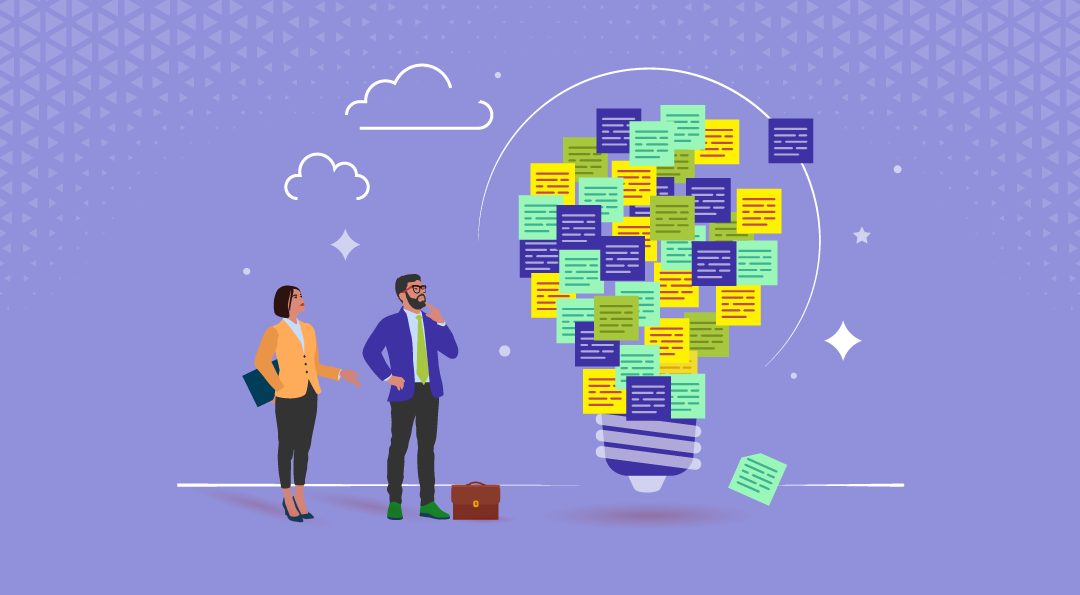Once you’ve done the analysis of the problem to be addressed (and learning is the solution), the subsequent step is to use that analysis as the foundation for designing an approach.
How you solve it similarly has details that matter to generate deeper learning.
Despite the seeming inconsistency, systematic creativity is not an oxymoron. There are elements we should follow to optimize our outcomes; again we need to apply our understanding of thinking and learning to the design process as well as the design.
As a first step, we need to explore the space of possible solutions, to identify a candidate. A number of years ago, media channels were touting how brainstorming didn’t work. To the extent that they’re talking about the original proposal, they were right. However, it only takes a small twist, really, to take that initial framework and turn it into a viable approach.
The initial approach would put people in a room, raise the problem, and start the discussion. The problem here is that the first comment generated constrains the thinking of others. If they haven’t already thought through their own answers! The modification needed is to ensure that everyone thinks on their own before sharing of ideas starts. That can happen beforehand or at the start of the group work, but it must happen. Everyone should generate all the ideas they can on their own. Then, you can use cross-inspiration to generate new ideas that extend the original base of possible solutions.
You want to ensure a thorough coverage of possible approaches. If people are too much alike and don’t generate independent ideas, you don’t fully explore the space. If you recognize the value of diversity and ensure breadth on the team, however, and get everyone to think on their own, you increase the likelihood of discovering a solution that wouldn’t have been explored otherwise. The one way too much variety hurts is if not everyone is committed to the outcome, but with that caveat, you increase the probability of finding the best solution by tapping into a diverse team. It’s a probabilistic game, but in most cases there are many solutions and you want to find the best.
A concomitant element is to not evaluate the designs until you’ve diligently worked to explore the space of solutions. Premature evaluation can keep you from exploring the space fully. The right time to start winnowing down the list is once you’ve exhausted the potential solutions, not before. When a decision is made that there are enough ideas, you then want to start identifying the relative merits and problems with the solutions. Your goal is to end up converging on the best solution. (If you converge on more than one, it’s likely time to test them.) Essentially, you diverge first and then converge.
To be creative, it helps to have a good basis on not just the learning science, but also ‘experience’, which leads to an onerous but necessary homework assignment: you have to spend more time doing things like playing games, watching movies, reading fiction, consuming comic books, and attending amusement parks. Maybe that’s not such a burden, but there is one small requirement on top of it; you now need to spend some cycles reflecting on what makes them work. What choices were made, and how do they stretch the mundane to the state of engagement?
Ultimately, you’ll converge on a design, a suite of experiences that will transform your learners from their initial state to the desired outcome. At this point, as we did with the analysis, you’ll want to document that proposed solution, and circulate for approval. Here we’re not promoting a developed solution, but instead a way to communicate the intent. This is another opportunity for course correction. Again, ideally, you constrain the agreement so that the document will be circulated to all appropriate individuals, and the feedback consolidated into one document, with only one round of revisions. Two important practical matters accompany this step.
Your stakeholders will likely have less appetite for engagement than your audience. It’s a not-unknown experience for experts and others to insist that this be taken ‘seriously’. They may resist fantastic settings and idiosyncratic dialog, despite the strong likelihood that your audiences would prefer it. My suggestion is to push the design further than you think you’ll get away with. Make them rein you in! They will, but the result will be still more engaging than if you prematurely restrain the experience, because they’ll still constrain your creativity. Unless you have a good sense that they ‘get’ the value of engagement, push the envelope. Your learners will thank you.
Another issue is that you likely will have to be concrete in communicating the experience. I’ve found that folks can approve a conceptual presentation of an experience, only to balk when being presented with the actual outcome. This can lead to disagreement and undesirable additional work to accommodate changes. I recommend that you not only document your intent, but make it tangible. In game development when big budgets are involved, they’ll mock up the core experience (with ‘smoke and mirrors’ behind the scenes) to allow investors to understand what’s intended. In this case, you likely won’t have to go that far. Depending on scope, you can use anything from an animated rendition of an experience to just narrated mockups of screens. However, do communicate the experience as part of the presentation to get signoff—the practice, in particular. This minimizes the likelihood of stakeholders claiming they didn’t understand what was coming.
With this process, you’re increasing the likelihood of the best solution. Yes, bringing people together to brainstorm a solution is a bit more complicated than just having someone design it alone. On the other hand, the outcome is more likely to be an engaging, and effective, solution. As the saying goes, “we are smarter than me” (with the caveat: ‘if you manage the process right’).
















